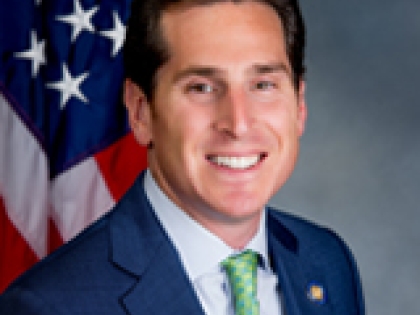
MTA considering raising fares to offset projected $10.3 billion shortfall
A steeper fare hike than what already was planned could be coming for commuters, including those on the Long Island Rail Road, as MTA officials on Wednesday backed off their previous promises that there would be no pandemic-related rate increase.
Faced with staggering revenue losses caused by the COVID-19 outbreak that are expected to last at least into 2024, Metropolitan Transportation Authority officials made it clear at their monthly board meeting that using fares to help fill a projected $10.3 billion shortfall by next year is a possibility.
“Everything has to be on the table,” said MTA chairman Patrick Foye, moments after the agency published a list of “future actions being reviewed” to shrink the deficit. It included “service reductions,” “reductions in force,” and “fare and toll increases” beyond the agency’s existing schedule of raising rates by 4% every other year. The next such increase is scheduled for early next year.
“Every one of them is not optimal, unacceptable, unpalatable,” Foye said of the MTA’s options. “But given the fiscal tsunami that we face, we’ve got an obligation to consider all of those things.”
Foye’s remarks contradict previous vows, including one made during a Newsday webinar in May. “There will be no pandemic-related fare increase, period. Absolutely not,” he said at the time.
MTA officials said Wednesday that fare hikes and other drastic measures, including layoffs or service cuts, would be last options — if the federal government does not come through with the $3.9 billion requested in a bill passed by the U.S. House in May. Lawmakers are negotiating the next stimulus package, which the Republican-majority Senate has signaled should prioritize education and small business.
Angelo Roefaro, a spokesman for Senate Minority Leader Chuck Schumer, said Schumer is “committed to fighting for robust MTA funding” as he did in the federal government’s COVID-19 stimulus package passed in March. The CARES Act awarded the MTA $3.9 billion then. Foye said Wednesday that every dollar of that bailout “will be fully exhausted” by the end of this month.
MTA Chief Financial Officer Robert Foran illustrated the authority’s fiscal dilemma during his regular midyear update to the authority’s four-year financial plan. It predicted that the financial impact of the pandemic will last at least into 2024, by which time the MTA’s COVID-19 losses will reach $16.2 billion.
One reason for the prolonged pain: MTA officials now predict that ridership across its agencies won’t return to normal levels until 2023. That’s a significantly more grim outlook than in April, when officials predicted that about 60% of riders would be back by the end of this year. Foye acknowledged the increase in ridership on the MTA’s commuter railroads since the region began its reopening has been “lower than expected, and disappointing.”
LIRR ridership is about 21% of what it was a year ago, and officials aren’t expecting a significant increase until after Labor Day. MTA Board member Kevin Law, who represents Suffolk County, cautioned the agency that raising fares “could actually lead to less commuters at a time when we are trying to attract more riders.”
Some MTA Board members suggested the MTA and state take steps to bail themselves out, including by considering a new gas tax that could be dedicated to transit.
“We should not take that off the table — without a doubt,” said David Mack, the board’s Nassau County representative, who noted that a similar tax in New Jersey has helped revenue there.
What should remain off the table, Sen. Todd Kaminsky (D-Long Beach) said, are fare hikes for railroad commuters, who already pay, on average, more than $334 for their monthly tickets.
A Newsday analysis last year showed LIRR ticket prices had more than doubled since 1999 — well outpacing New York’s inflation rate and the growth in median household incomes on Long Island.
Foye said the MTA has not discussed the size of a potential fare increase that would be proposed, if the additional federal funding does not come through.
“It is unconscionable for the MTA to ask LIRR commuters to pay even more, while they are doing far less,” said Kaminsky, a leading voice on public transportation reforms in Albany. “New Yorkers are hurting financially and simply cannot afford another fare hike.”